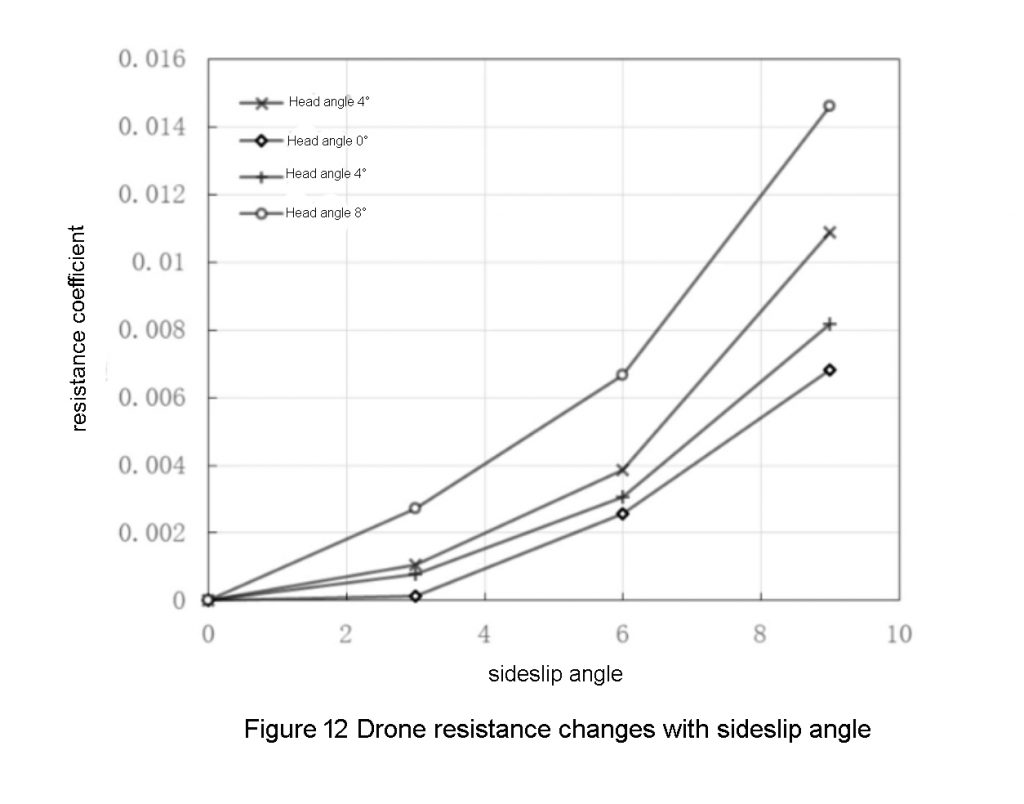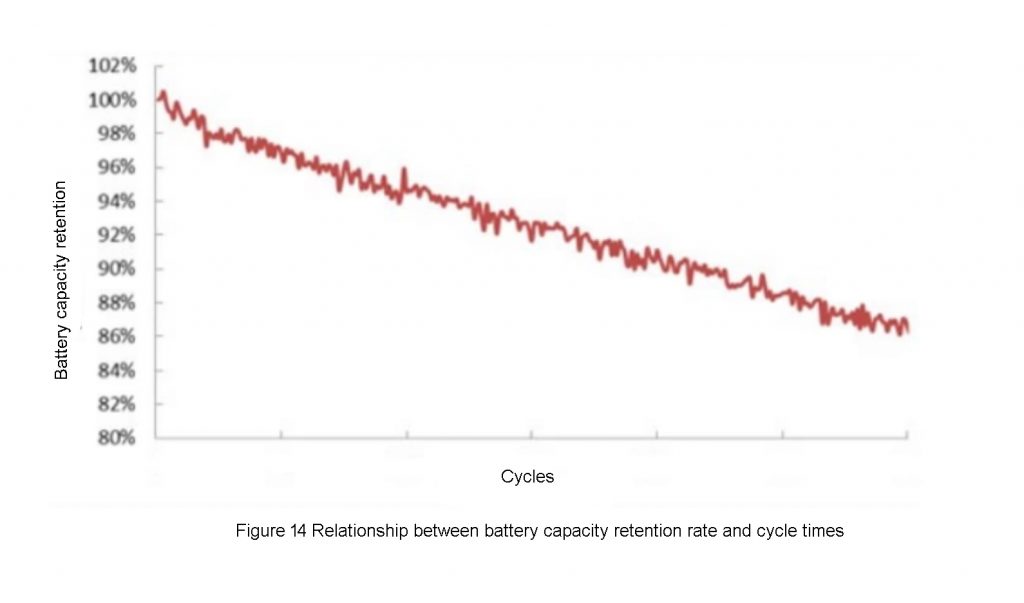What are the factors that affect the flight time and range of drone? 1
The range and duration of drones are the most important indicators to measure the performance of drones. Today, let’s learn what factors affect the range and duration of drones.
Drone range and flight time
UAV range: refers to the horizontal distance that the UAV can travel through exhausted energy under standard air pressure, which is represented by R.
UAV flight time: under the same atmospheric conditions, the time for continuous flight with exhausted energy, represented by t.
The UAV flies along a predetermined route, generally including three stages of ascent, cruise and descent, as shown in Figure 1. Therefore, the voyage and voyage time should be the sum of the voyage and voyage time of the three segments respectively. which is:
R=R1+R2+R3
t=t1+t2+t3

For large UAVs, the range and flight time of the climb and descent stages only account for about 10% of the range and flight time; while for small UAVs, the climb rate is generally small, and it is necessary to fly at a higher altitude. It takes more time, and the proportion of the flight time for the climb segment will increase.
Range and duration are defined in a reference environment of standard atmosphere and calm (calm atmosphere). Simply put, the so-called standard atmosphere is an atmospheric environment corresponding to a relative humidity of 0, a sea-level atmospheric temperature of 15°C, an air pressure of 101325Pa, and an air density of 1.225kg/m3.
In different atmospheric environments, the endurance performance of UAVs is different. Just like a car, the cruising range of a full tank of fuel needs to be measured under given road conditions. The cruising range and cruising time measured on highways and country roads are definitely different.
What factors will affect battery life? let’s see it together?
Influencing factors of voyage time
The external and variable factors affecting the endurance performance of UAVs mainly include: mission load weight and energy consumption, flight speed and altitude, atmospheric temperature and humidity, in-flight maneuvers, wind and battery life, etc.
Mission payload weight and energy consumption
The heavier the mission payload, the higher the flight weight of the UAV, which leads to an increase in the lift required by the aircraft in stable level flight, which in turn increases the drag (as shown in Figure 2), which increases the power consumption of the engine or battery and reduces the endurance performance of the aircraft. Some data show that a 20% increase in weight reduces the range and voyage time of the drone by 26% and 19% respectively; weight reduction is beneficial to both range and voyage time, with a 20% reduction in weight and a 45% increase in range and voyage time,29 %.

Flight altitude and speed
The flight altitude (Hp) and speed mainly have a great influence on the engine performance and lift-drag characteristics of the UAV, thus affecting the endurance performance of the UAV. However, flight altitude and speed have different effects on UAVs equipped with fuel engines and electric engines.

Figure 3

Figure 4

Figure 5Figure 3 shows the change curve of hourly fuel consumption of a certain type of oil-powered UAV engine with altitude and speed. It can be seen that for a UAV equipped with a fuel engine, its hourly fuel consumption decreases with the increase of altitude (as the altitude increases, in order to keep the aircraft in level flight, the aircraft’s true airspeed will increase slightly), and as the speed increases Increase. The flight time of a UAV increases with altitude; it decreases with speed (Figure 4). The hourly fuel consumption rate of the engine is the lowest, and the speed point where the flight time is the longest is called the long-lasting speed. Range increases with altitude, parabolic with speed
In a linear shape, there will be a speed point with the largest range, which is called the long-distance speed, as shown in Figure 5.
For electric drones, the performance of the engine is less affected by altitude and speed, and the change in aircraft endurance performance is mainly because the lift-drag characteristics of the aircraft change greatly with the change of the flight altitude and speed, resulting in the stable level of the aircraft at different altitudes and speeds. During level flight, the thrust and the working state of the fixed-pitch propeller are different, which in turn leads to different power consumption of the motor, which ultimately affects the flight range and flight time of the aircraft.


Figures 7 to 9 show the variation of flight time, cruising time (stable level flight operation section) and effective cruise mileage (stable level flight operation section) with flight altitude and speed, respectively. For electric small UAVs, with the increase of altitude, the flight time and range of the aircraft decrease; with the increase of speed, the flight time and range of the aircraft increase first, and then decrease, and the flight time is the largest in level flight. The speed point with the least thrust (level flight resistance); the speed point with the maximum range is slightly higher than the maximum speed point during flight. Figure 10 shows the comparison between the theoretical calculation results and the actual flight test results, which can also prove the correctness of the law.
It should be noted that in the data in Figures 6 to 9, the take-off height of the aircraft is all 0 meters above sea level. For small electric UAVs, the power consumption during the climb phase is relatively large, and an excessively high climb distance will have a certain adverse effect on the range and flight time.
Atmospheric temperature and humidityThe influence of atmospheric temperature and humidity on UAV flight is basically the same. The higher the temperature and humidity, the smaller the air density, and the smaller the thrust generated by the propeller. Under the same flight conditions, the propeller speed needs to be increased to make up for the loss of thrust, so the power consumption of the engine increases, resulting in a decrease in the endurance performance of the UAV; otherwise, it increases. Therefore, in general, when flying in dry winter, the endurance performance of the UAV is better, but it is worse in summer.
maneuvers in flight
Small-radius turns and circles, rapid changes in speed, and rapid increases in altitude during flight will all lead to an increase in the resistance of the UAV and the energy consumption of the engine, resulting in a decrease in the UAV’s flight time and flight distance.
wind effect
The winds that affect the drone’s endurance performance include constant and steady winds and gusts.
Steady winds parallel to the direction of the drone’s flight speed (downwind and headwind) will not affect the drone’s flight time. The wind at a certain angle to the flight direction of the drone will reduce the endurance performance of the drone. In the flight that the drone keeps sailing, when it encounters wind that is not parallel to the flying direction of the drone, an angle will be formed between the airspeed of the drone and the plane of symmetry of the drone. is the sideslip angle (as shown in Figure 11). When flying with a sideslip angle, the resistance of the UAV will increase with the increase of the sideslip angle (as shown in Figure 12), resulting in an increase in the energy consumption of the UAV engine and a decrease in the Continuation of the droneflight performance.


The gust (gust, turbulence) changes the commanded flight state of the UAV, and the autopilot will adjust the UAV engine and control surface to maintain the commanded flight state of the UAV to overcome the influence of the gust on the flight. The process requires additional energy consumption, which also increases the energy consumption of the UAV engine and reduces the endurance performance of the UAV.
Battery Life
For electric drones, the use environment of the battery and the number of charge-discharge cycles will also affect the discharge capacity of the battery, which in turn affects the battery life of the drone. Generally, the suitable ambient temperature for lithium batteries is between 20°C and 40°C. At this time, the discharge capacity is the largest; as the temperature decreases, the discharge capacity of the battery decreases (as shown in Figure 13). When the drone is flying in the air, the atmospheric temperature is low, and the endurance performance of the drone will be reduced if it is used without thermal insulation measures.

As the number of charge-discharge cycles of the battery increases, the retention rate of the battery’s capacitance gradually decreases (as shown in Figure 14), and the available power of the battery decreases during flight, resulting in a decrease in the drone’s endurance performance.

How many measures are there to improve voyage time?
There are many factors that affect the voyage time in UAV flight. For UAV pilots or UAV operators, the most concern may be how to fly the best range and flight time to improve operational efficiency. Through the analysis of the factors affecting the voyage time, the following measures can be taken to improve the voyage and voyage time:
According to the mission requirements, it is clear whether the mission requires long flight time or long flight range; if long flight time is required, select long flight speed as flight speed; if long flight range is required, select long flight speed as flight speed. Generally, the long-distance voyage speed is slightly higher than the long-distance voyage speed. The cruising speed generally given by UAV designers is the long-running speed of the UAV.

Plan the flight route reasonably, minimize small-radius turns during the operation, and maneuvers such as the rapid increase of flight altitude and speed.
If conditions permit, you can choose a time when the airflow is stable and the temperature is lower for drone operations.
Pay attention to battery maintenance and reasonable use.
Very interesting. Thank You.